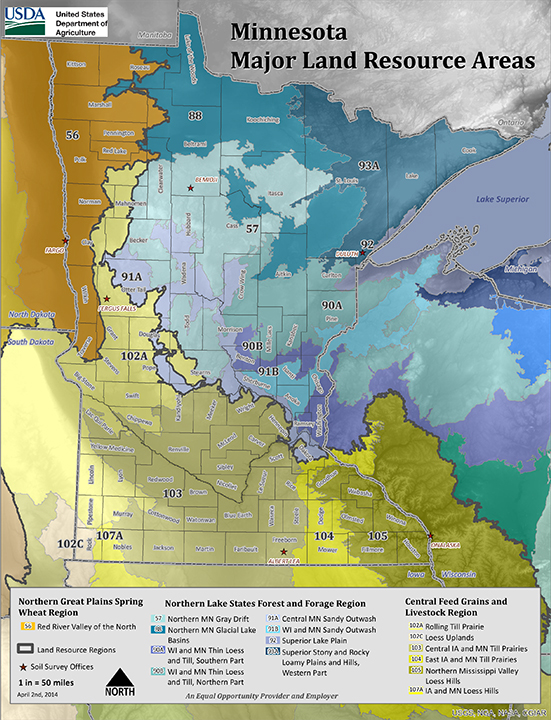Blueberry, Wild Rice, Hockey, Agate, Honeycrisp, Pink Lady’s Slipper, Morel, Norway Pine, Walleye, Milk, Loon, Lester. Is this some kind of a weird shopping list for a camping trip? If you’ve been a Minnesotan for a while you will recognize this as a partial list of our state symbols. They respectively are our state muffin, grain, sport, gemstone, fruit, flower, mushroom, tree, fish, drink, bird, and soil.
What, you missed the 2012 announcement of the state soil series – the Lester (and that soils have names)? Full name: Lester Loam.
 Most people only use “loam” to describe a good soil for growing things. In fact, loam is good for growing things but also precisely describes the ratio of sand, clay, and silt in a soil. Too much of any one makes a soil less than optimal; loams have a nice balance. The loamy soils in the southern part of Minnesota are the envy of many around the world. The Lester is the best of the best. It covers 6,000 acres in the eastern part of MLRA 103 (Major Land Resource Area).
Most people only use “loam” to describe a good soil for growing things. In fact, loam is good for growing things but also precisely describes the ratio of sand, clay, and silt in a soil. Too much of any one makes a soil less than optimal; loams have a nice balance. The loamy soils in the southern part of Minnesota are the envy of many around the world. The Lester is the best of the best. It covers 6,000 acres in the eastern part of MLRA 103 (Major Land Resource Area).
This is the area that, in the 10,000 years since the Des Moines lobe deposited its gray till – a shifting mixture of prairie, wet prairies and forests along with the burrowing and microscopic organisms that lived there – created the perfect combination of texture, structure, organic content, and available nutrients in a sweet soil for farming (sweet meaning calcareous or non-acidic, not sah-weet!).
This is a fortuitous chain of events for those that immigrated to this region, cleared and drained the land, and started harvesting the fruits of the soil. But if soil is an evolving, living thing that took 10,000 years to develop to this point, and also relies on living things to sustain it, how long will the Lester remain one of the best agricultural soils in the world?
The Natural Resources Conservation Service and farmers who rely on their services are focusing more on what makes and keeps a soil healthy and functioning. A large portion of a soil’s health report has to do with its capacity to infiltrate and store water. This is a function of its texture, structure, and organic content.
That is where Freshwater Society comes into the picture. We care about soil health because it impacts how water enters the ground. Soil on the move becomes water pollution because of its effects on water clarity and also because of the problematic chemicals like phosphorus that sorb to it. Keeping soil in place and in a healthy state is everyone’s goal.
— Carrie Jennings, research and policy director
Source: http://www.dnr.state.mn.us/mcvmagazine/archive.html?keyword=lester (May-June 2013)